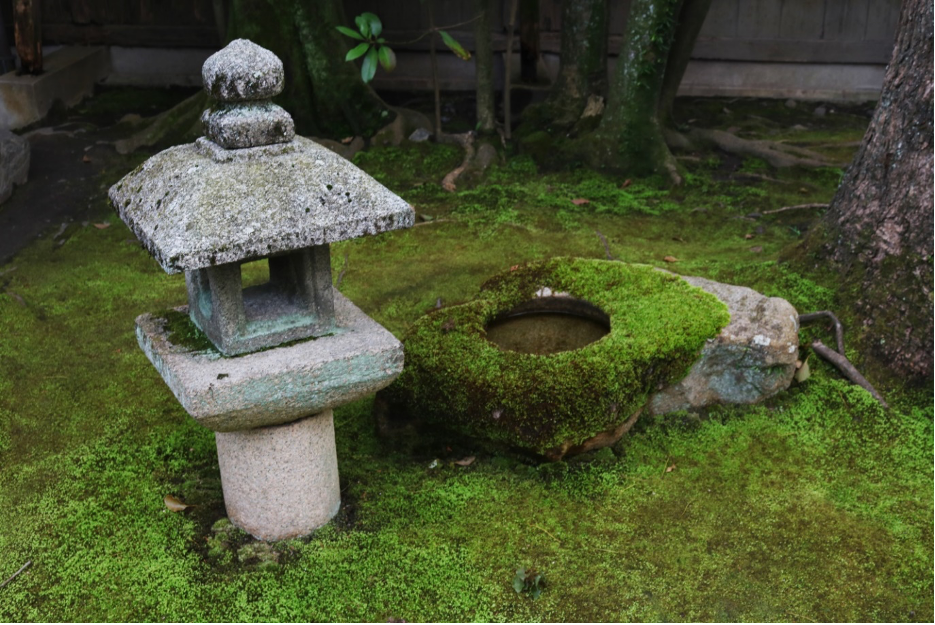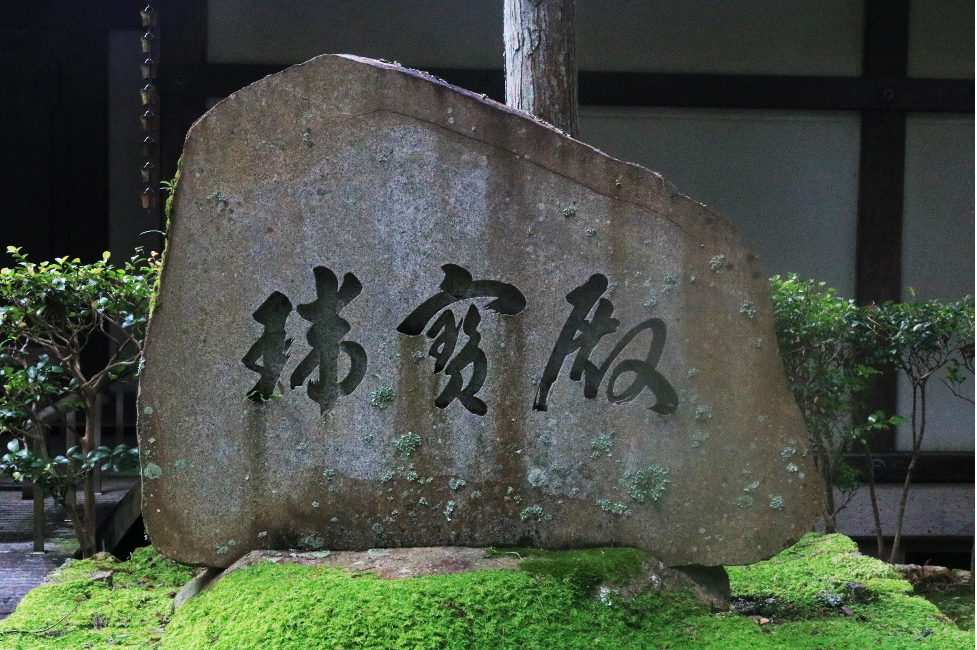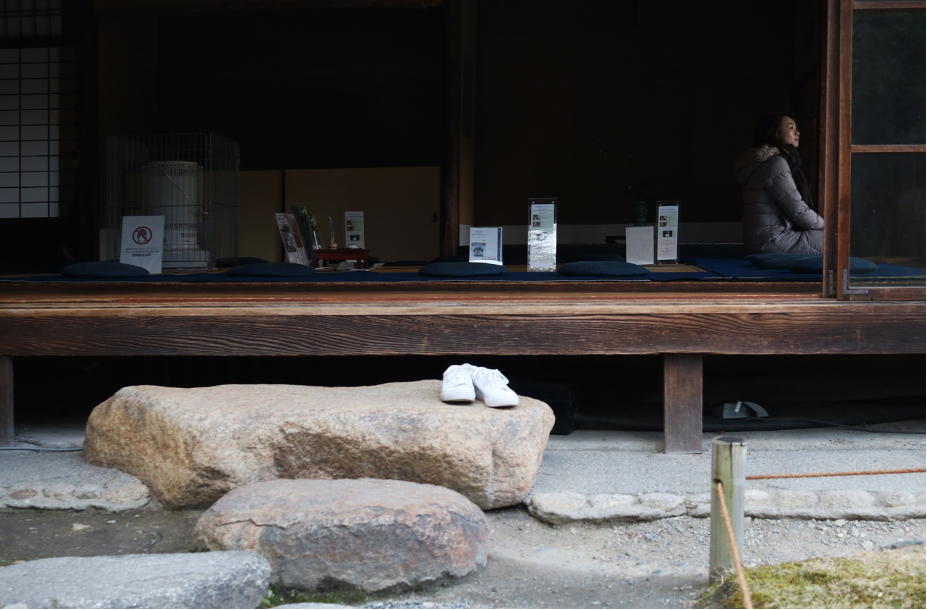
- ARAB NEWS
- 03 Jul 2025

Nader Sammouri
OSAKA: Japan leaves a strong watermark on almost every visitor who becomes unwaveringly aware of its sensibilities towards high standards of aesthetics and attaining what appears like a perfection of presentation. Interviews with people from the Middle East that live in Japan and work in artistic fields examine the uniqueness of Japanese aesthetics, which is a characterizing feature of the country’s culture.
From wrappings in the utmost inventive manner to the artistic presentation of food and the arrangement of flowers or stones in a Zen garden, appearance tends to matter in Japan and most of the time, it is representative of a product, aproduct, a service or a self.
 Couples viewing stone arrangements at the prominent dry garden of Ryoin-Ji (龍安寺) Zen temple in Kyoto. (Supplied)
Couples viewing stone arrangements at the prominent dry garden of Ryoin-Ji (龍安寺) Zen temple in Kyoto. (Supplied)Saudi Arabian Producer at Manga Productions Atheer Al Soghayer, who has been living in Japan for five years compared aesthetics in Japan to that of her home country.
“We tend to see beauty in glamor and luxury and less might not be considered an aspect of beauty to many in my country. When meeting Japan, I was introduced to a different perspective of beauty.”
Atheer elaborated on the topic by saying that her perception is that the Saudi people tend to look more at the big picture of things while in Japan, the amount of dedication and care that is put in the details struck her due to its significance.
“Certainly there is a lot to talk about when it comes to the traditional crafts of the KSA. One of the quality items of the place that I come from, Al-Ahsa is the Hasawi Bisht (البشت الحساوي او الأحسائي), an elegant robe with various designs to its stitches. Though my experience in Japan showed me a whole new level of depth in the details. The Japanese spend a lot of time researching ways to improve the outcome and tend to notice details that we may not pay any regard to. For example, the Japanese traditional sweets or Wagashi (和菓子) tend to change with the seasons and the confection is inspired by certain flowers which bloom in every season. Similarly, the drawings on the Japanese kimono (きもの/着物) is seasonal as well and particular patterns are expected to be worn to reflect current seasons,” Atheer said.

Atheer explained that when she went to a ceramics festival in Kiyomizu-dera temple(清水寺) in Kyoto and began conversing with the stall vendors, she was surprised at the way the craftsmen illuminated every little detail in the piece they held.
‘’The way their hands fell gently on the cup, revealed their care for it. They really cherish every piece for the well-thought time they’ve put on the process to make it”, Atheer said.
Indeed the significant amount focus placed in the details would grab the attention of many people and a lot of Japan’s success in the field may be attributed to its exceptional sense of detail and attention to the minor Resource. While this is an overarching theme within the country, not all Japanese individuals are meticulous aesthetes who spend their time handcrafting Buddha statues or meditating on a rock under a waterfall next to a temple garden.
Egyptian architect Mohamed Derzawi, who lived in Japan for around four years explained his perception of the country’s aesthetic scene by saying that ”I saw a translation of silence into architecture in Japan. Like music per se, without spaces or intervals, it can neither be created nor composed. I got introduced to a new sense of silence and emptiness of space which was a soothing joy that contrasted the oblivious noise in other parts that I have seen in the world. It helped me clear my mind and wander.”
Japan finds beauty in scarcity and the bare essentials and hosts its own minimalist undertaking. This poses a novel concept to the modern world which is used to consumerism. The are plenty of reasons behind this mentality, some of which are due to its geographical isolation and the scarcity of resources in Japan, which may have contributed to minimizing the margin for error and drove individuals to cherish and invest in what is available.
“But at the same time I saw growing cities like Tokyo battle that concept of emptiness for the sake of modernism. I think Buildings, not Architecture are being made,” Derzawi added.
Hossam El Brrashi, a computational designer from Egypt, who worked at the office of globally acclaimed architect Kengo Kuma in Japan for almost two years, noticed that Japanese aesthetics are usually recognized to be a minimalistic approach to design in one way or another, but also believed that this simplification is not mature enough to describe its complexity, and it neglects a lot of its interesting qualities accumulated over centuries, preserving an impressive balance between ancient and modern aesthetical approaches, which results in such an un-matched approach to design that is also very much rooted in the Japanese every-day’s instinctive life.
 Kanji engraved on a rock near Nanzen-ji Temple (南禅寺) in Kyoto. (Supplied)
Kanji engraved on a rock near Nanzen-ji Temple (南禅寺) in Kyoto. (Supplied)“These aesthetical qualities are countless and hard to outline tightly, but can be outlined roughly in leveraging pure natural beauty and simplicity, imperfection, time-dynamic beauty, modulated movement, elegance, embracing voids and negative spaces, subtlety, ethical beauty, mystery and most recently cuteness. Both materialistic and spiritual features are robustly present and balanced in this Japanese approach towards design, and life in general.” Hossam said
He added that on the other side of the planet, Arabic aesthetics are also a result of accumulated qualities over centuries and believed that ancient and modern Arabic aesthetical qualities do not blend together in a robust whole as much as observed in Japanese aesthetics, but there are serious endeavours recently to bridge this gap that may need some time to be fruitful.
“Japanese aesthetical qualities can be outlined in very rich details, spirituality, climate-oriented and connection to nature. Arabic aesthetics emphasize more on the spiritual features due to the strong connection to religions long time ago and until now”, Hossam said.
 Garden at Daitoku-ji (大徳寺) temple complex in northern Kyoto showing the harmony between nature and man-made elements. (Supplied)
Garden at Daitoku-ji (大徳寺) temple complex in northern Kyoto showing the harmony between nature and man-made elements. (Supplied)Japanese aesthetics comprise of a sum of pillars. Some of its most important pillars and concepts of aesthetics are WabiSabi, Wabi being the earthy, natural beauty and Sabi is the beauty of age transience which comes with the passing of time, Yugen which refers to the elegant and the subtle. These are some of the most underpinning ideals of Japanese aesthetics that we can observe particularly in the center of Kyoto, the cultural capital of Japan, rendered among dark temples which intentionally lack light and decorated with aging wood which carry a beautiful scent.
“If I was to import a pillar of aesthetics from Japan to the MENA region, I will opt for time-dynamic beauty or what is called in Japanese “Sabi”, which has a literal translation to the word ‘Rust’. I find this quality the most captivating as a concept. It indicates the beauty that emerges over time leaving unique stories in it”, Hossam said.
 Traditional teahouse at Murin-an villa in Kyoto showing an appreciation of the shadows. (Supplied)
Traditional teahouse at Murin-an villa in Kyoto showing an appreciation of the shadows. (Supplied)According to Hossam, the artist behind the piece used to patterns and geometries which exist dominantly in the weaves of Islamic architecture may have a tendency to find emptiness appealing and one who is used to emptiness may be drawn to a more elaboration in the space. For instance, Hossam said, many Japanese people tend to be fond of the architectural expression in European architecture and Kobe is a well-known city in Japan that tried to reflect the western image of a city with more extravagant western-borrowed details like those from English, German and French architecture. When it comes to Arabic architecture, many Japanese associate that with the Moroccan style.
“Beauty is totally subjective. It is not easy to evaluate the aesthetics of different backgrounds, histories and cultures. What appeals to someone can trigger someone else, but it is definitely interesting to compare their qualities and the way they are connected to the culture and life.” Hossam said.
Atheer concluded by saying that embracing the culture is a part of identity as design and culture walk hand in hand. Arabesque patterns and minimalism are both beautiful in their own ways and are both for a different cause. Achieving a balance in between is what matters.